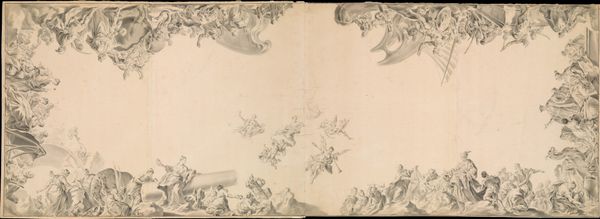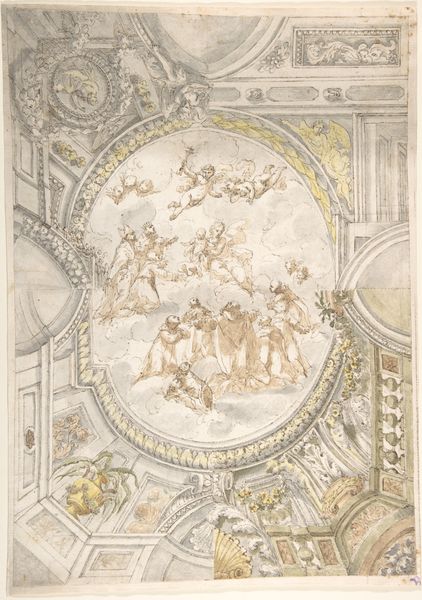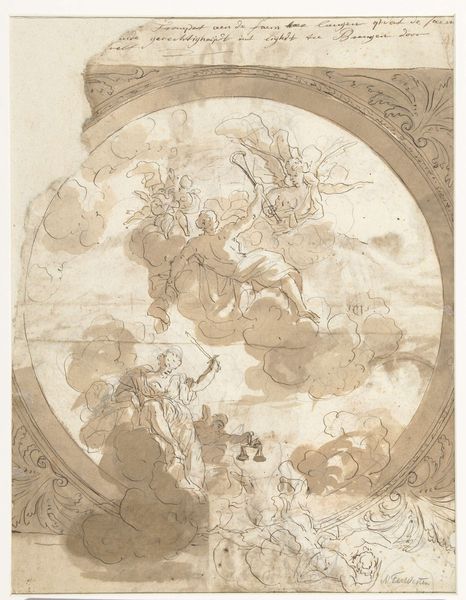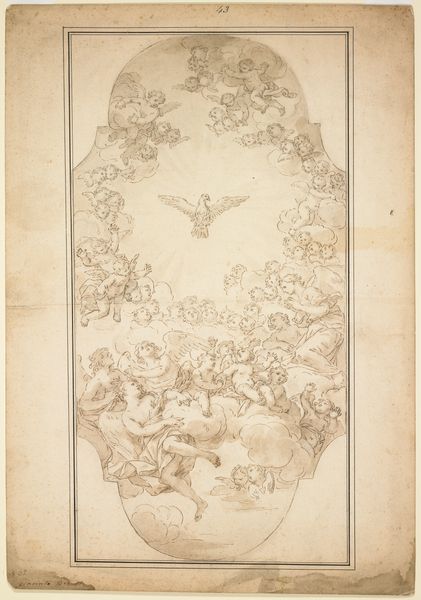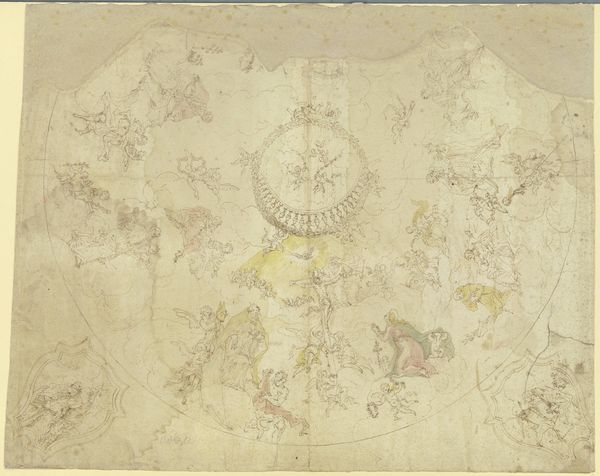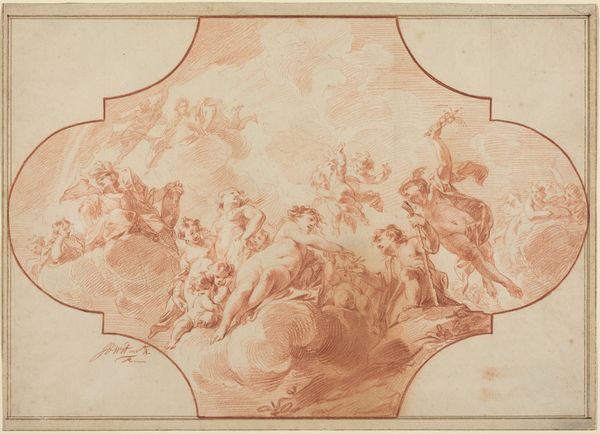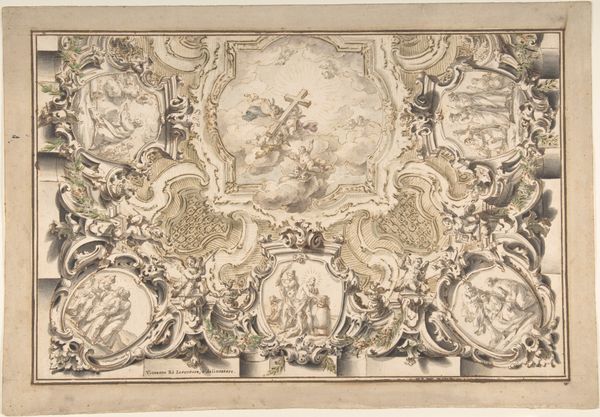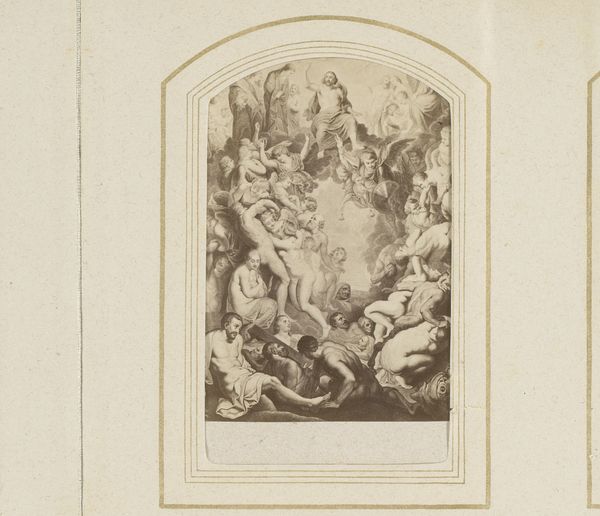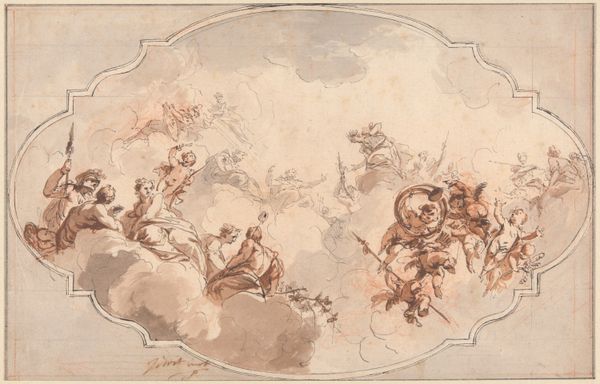
Flora vor Jupiter. Entwurf für ein Deckengemälde in Schloss Aurolzmünster 1696 - 1706
0:00
0:00
Copyright: Public Domain
Curator: This drawing, "Flora vor Jupiter. Entwurf für ein Deckengemälde in Schloss Aurolzmünster," created between 1696 and 1706 by Johann Eustachius Kendlbacher, is currently housed in the Städel Museum. It's an ink and watercolor sketch on paper for a ceiling fresco. Editor: My first thought is of a celestial dance! There’s such a light, airy feeling to it, even in this preliminary form. It’s very dreamlike with all the floating figures. Curator: It embodies the artistic flair prevalent during the late Baroque period, infused with Mannerist tendencies, visible in its dynamic composition and elongated figures. Courtly art like this had clear social functions, acting as statements about the wealth, status, and sophistication of its patrons. Editor: Right, but let’s consider the symbolic layers here. We have Jupiter, the king of the gods, often associated with power and authority, accompanied by Flora, the goddess of flowers and springtime. Seeing them together suggests an allegorical union – possibly about a fertile and prosperous reign? Curator: I agree. Allegory was very important for powerful people, enabling complex moral and political ideas to be displayed and decoded. It became very on the nose over time but, done right, was useful. The figures were chosen not just for decoration, but to convey specific ideas about a ruling family's legitimacy. Editor: Precisely! It's like reading a visual poem. Consider the putti, these cherubic figures swirling around; they symbolize love and abundance, adding to the sense of heavenly bounty. These symbols resonated with viewers familiar with classical mythology and humanist ideals. Curator: It really showcases the institution's support for these elaborate artistic programs that acted almost like propaganda machines. Kendlbacher, as a court-supported artist, produced what was necessary for his livelihood and for maintaining relationships. Editor: So much unfolds when we consider the broader implications behind seemingly decorative artworks. Thanks to that knowledge, the sketch, rather than a forgotten artifact, becomes a valuable insight. Curator: Absolutely. It goes beyond simple aesthetics; it gives us insight into the intricate dance between artistic vision, patronage, and historical narrative. Editor: Understanding the symbols illuminates what these patrons valued.
Comments
No comments
Be the first to comment and join the conversation on the ultimate creative platform.
